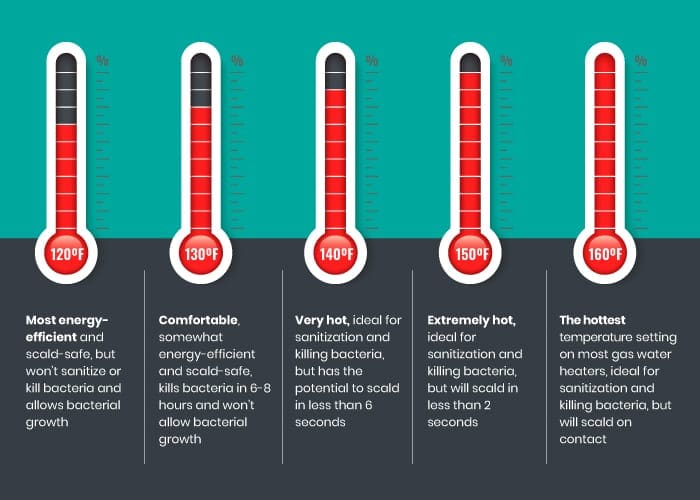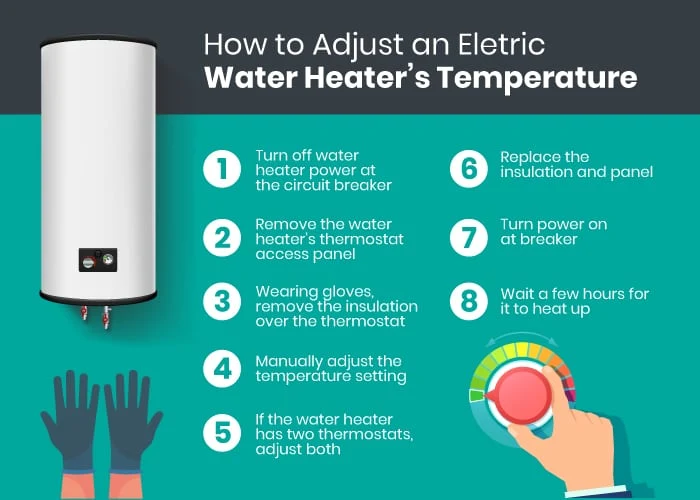What Temperature The Heater Should Be On

Finding the sweet spot for your thermostat setting isn't just about comfort; it's a key factor in managing your energy consumption and slashing those hefty heating bills. But what is the "right" temperature? The answer, like most things in the world of energy efficiency, is multifaceted and depends on your circumstances. Let's dive into the details.
Understanding the Energy-Saving Sweet Spot
According to the U.S. Department of Energy (DOE), the recommended thermostat setting for energy savings in the winter is 68°F (20°C) when you're awake and active. Dialing it back further, ideally to 60-62°F (15.5-17°C) while you're asleep or away from home, can result in significant energy savings.
How significant? The DOE estimates that you can save as much as 1% on your heating bill for each degree you lower the thermostat for an eight-hour period. This might seem small, but it adds up over the course of a heating season. For example, lowering your thermostat from 72°F to 68°F for eight hours a day could save you around 4% on your heating costs. A 72°F to 62°F switch yields about 10% in savings.
The key is consistency and duration. Short-term adjustments might offer negligible savings. Longer periods of lower temperatures maximize the impact.
Beyond the Numbers: Factors Affecting Your Ideal Temperature
While the DOE's recommendations are a great starting point, several other factors influence what temperature is right for your home:
- Insulation: A well-insulated home retains heat more efficiently, allowing you to maintain a comfortable temperature with less energy consumption. Older homes with poor insulation will naturally require higher thermostat settings to achieve the same level of comfort. Consider an energy audit to identify areas where you can improve insulation.
- Climate: If you live in a region with harsh winters, you might naturally need to set your thermostat higher than someone in a more temperate climate. However, even in colder climates, implementing energy-saving strategies can still drastically reduce your heating bills.
- Occupancy: If you're frequently away from home during the day, there's no need to heat an empty house to a comfortable temperature. Program your thermostat to lower the temperature while you're gone and raise it shortly before you return.
- Health and Age: Infants and elderly individuals may require warmer temperatures for health and comfort reasons. These considerations should always take precedence over energy savings.
- Personal Preference: Comfort is subjective. Some people are more sensitive to cold than others. It's important to find a balance between energy savings and personal comfort.
The Rise of Smart Thermostats and Zoned Heating
Smart thermostats are revolutionizing the way we manage home heating. These devices learn your heating and cooling patterns, automatically adjusting the temperature based on your schedule and preferences. Many models also offer features like:
- Remote Control: Adjust your thermostat from anywhere using your smartphone or tablet.
- Geofencing: Automatically lowers the temperature when you leave home and raises it when you approach.
- Energy Reports: Track your energy consumption and identify areas where you can save even more.
- Integration with Smart Home Systems: Connect your thermostat to other smart home devices, such as lights and blinds, for a more integrated and energy-efficient home environment.
Smart thermostats can significantly enhance energy savings. Studies show that homes with smart thermostats save, on average, 10-12% on heating costs. The initial investment in a smart thermostat often pays for itself within a year or two through reduced energy bills.
Zoned heating systems offer another layer of control. Instead of heating the entire house to the same temperature, zoned systems allow you to control the temperature in individual rooms or zones. This is particularly useful if you have rooms that are rarely used or if different members of your household have different temperature preferences. For example, using a mini split ductless system to heat only commonly used spaces.
Optimizing Your Heating System for Maximum Efficiency
Beyond thermostat settings, there are several other steps you can take to optimize your heating system for maximum efficiency:
- Regular Maintenance: Schedule regular maintenance for your furnace or heat pump to ensure it's running efficiently. A dirty filter or malfunctioning component can significantly reduce performance and increase energy consumption.
- Seal Air Leaks: Seal any air leaks around windows, doors, and other openings. This will prevent drafts and help keep your home warmer. Use caulk or weatherstripping to seal gaps and cracks.
- Insulate Your Ductwork: If you have ductwork running through unheated areas of your home, such as the attic or basement, make sure it's properly insulated. This will prevent heat loss and improve the efficiency of your heating system.
- Consider Upgrading Your System: If your heating system is old and inefficient, consider upgrading to a newer, more energy-efficient model. Look for Energy Star certified products, which meet strict energy efficiency guidelines. You may qualify for rebates or tax credits for upgrading to an energy-efficient system.
Rebates, Incentives, and Tax Credits
Many utility companies and government agencies offer rebates, incentives, and tax credits for energy-efficient upgrades. Check with your local utility company and the Energy Star website to see what programs are available in your area. These incentives can significantly reduce the upfront cost of upgrading to a more energy-efficient heating system or installing a smart thermostat. For example, the Inflation Reduction Act offers tax credits for qualified energy efficiency improvements.
Debunking Common Heating Myths
There are several common misconceptions about heating that can actually lead to higher energy bills:
- Myth: It's more efficient to leave the thermostat at a constant temperature than to adjust it throughout the day. Reality: It's generally more efficient to lower the thermostat when you're away from home or asleep. The larger the temperature difference between indoors and outdoors, the more energy you'll save by lowering the thermostat.
- Myth: Turning the thermostat up higher will heat the house faster. Reality: Your heating system produces heat at a constant rate. Turning the thermostat up higher won't make it heat the house any faster; it will simply cause it to run longer and potentially overheat the house.
- Myth: Closing vents in unused rooms will save energy. Reality: Closing vents can actually create pressure imbalances in your heating system, which can reduce its efficiency and potentially damage components. It's better to use a zoned heating system to control the temperature in individual rooms.
A Balanced Approach to Comfort and Savings
Ultimately, the "right" temperature for your heater is a personal decision that balances comfort, health, and energy savings. Start with the DOE's recommendations as a baseline and then adjust based on your individual circumstances. By implementing energy-efficient strategies, upgrading to a smart thermostat, and optimizing your heating system, you can significantly reduce your energy bills without sacrificing comfort.
Key Takeaways:
- 68°F (20°C) is the recommended thermostat setting for energy savings when you're awake.
- Lowering the thermostat by 8°F (4.4°C) for eight hours a day can save you up to 10% on your heating costs.
- Smart thermostats can save you 10-12% on heating costs.
- Regular maintenance, sealing air leaks, and insulating ductwork can significantly improve the efficiency of your heating system.
- Take advantage of rebates, incentives, and tax credits for energy-efficient upgrades.
By taking a proactive approach to energy management, you can create a more comfortable, sustainable, and affordable home environment. Don't be afraid to experiment with different thermostat settings and energy-saving strategies to find what works best for you. With a little effort, you can enjoy a warm and cozy home without breaking the bank.










